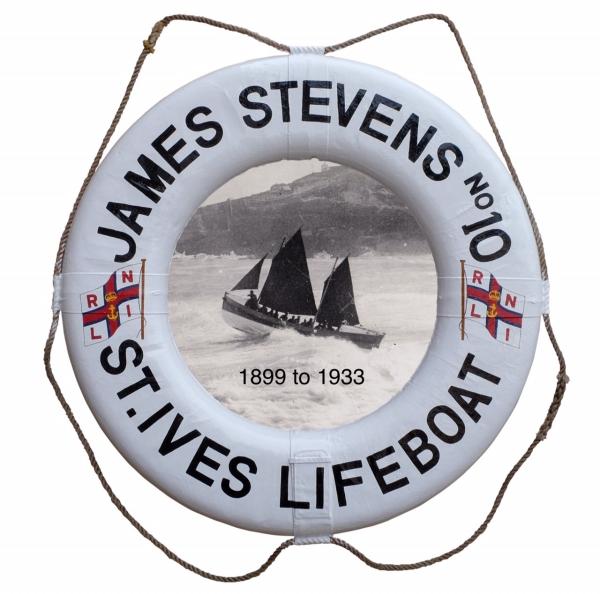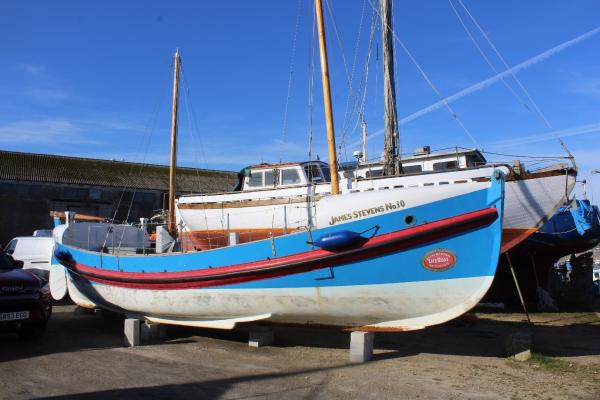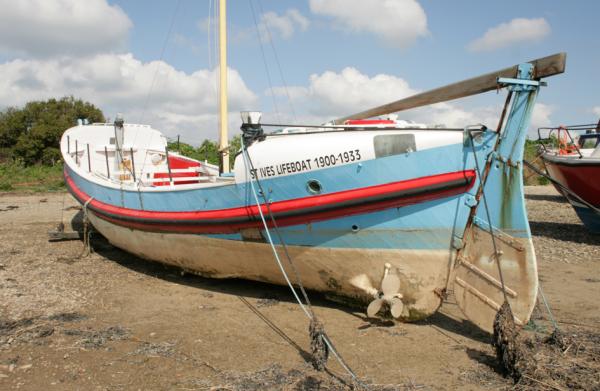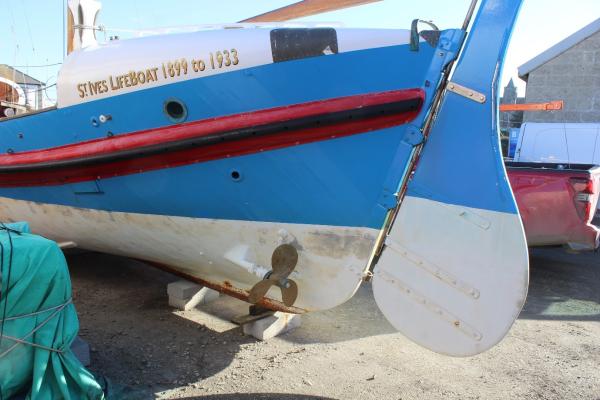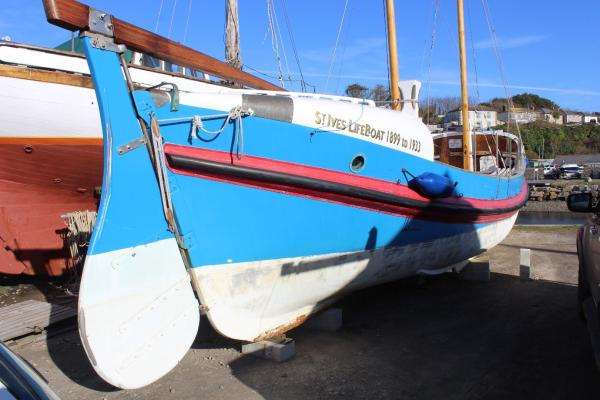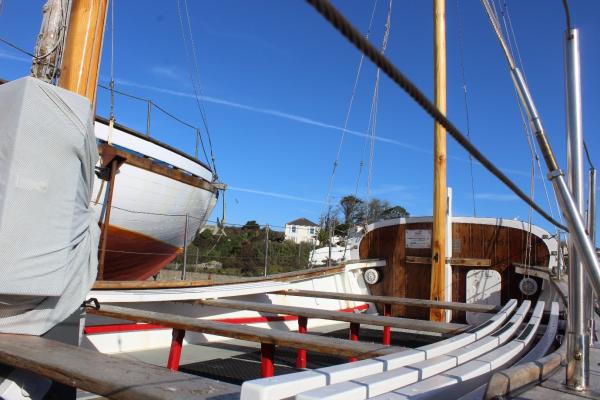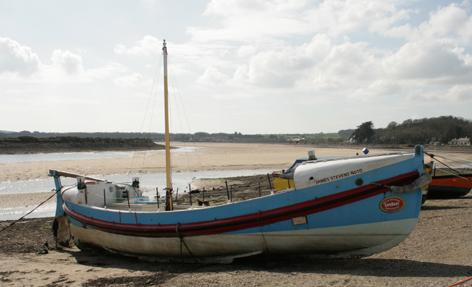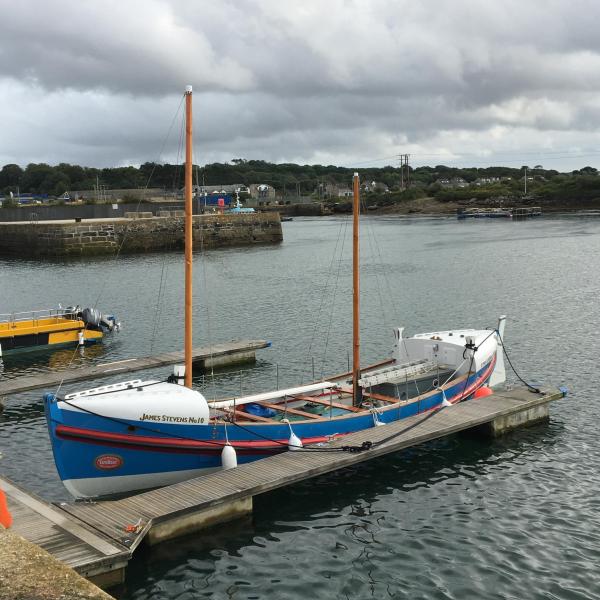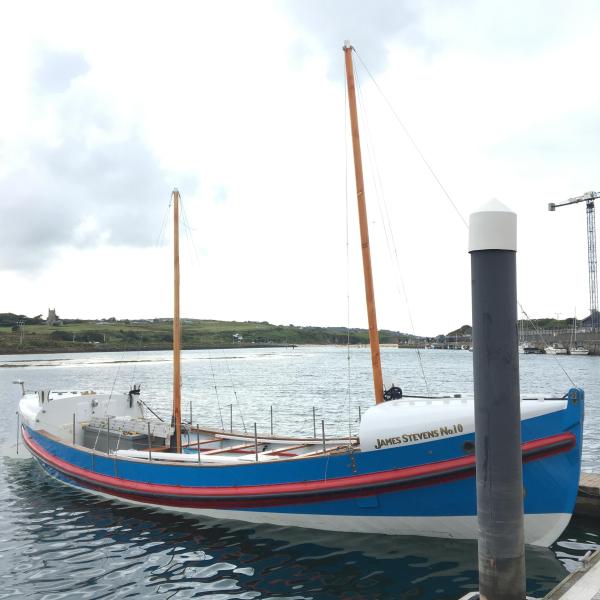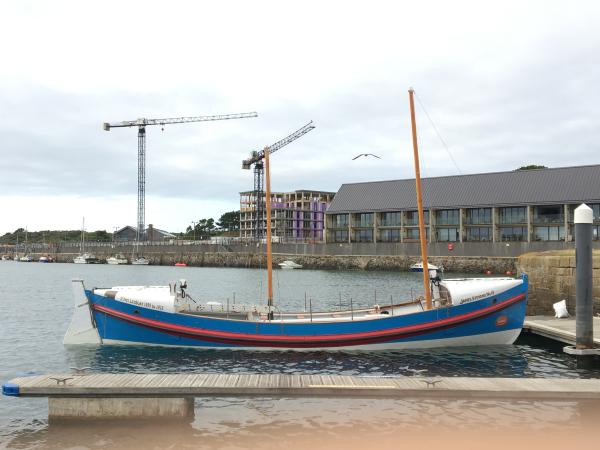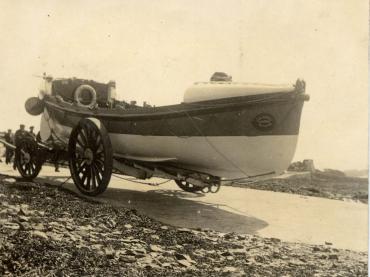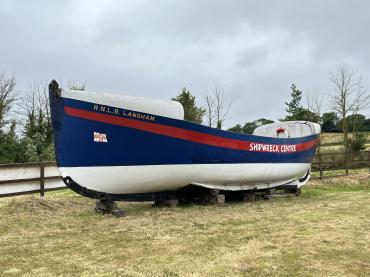

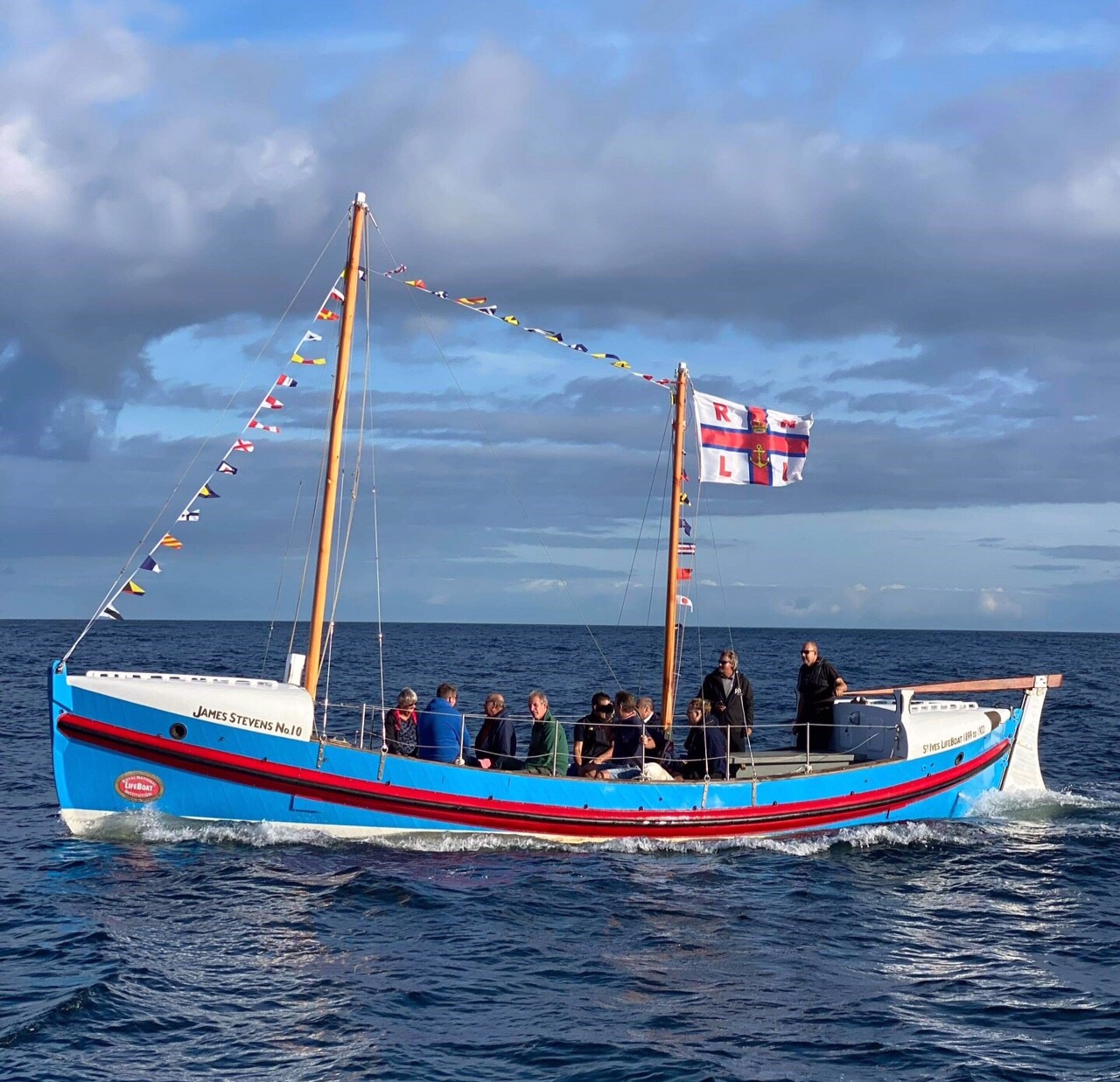
Previous names
- 1934 - 2002 PATRICIA MARY
Details
Construction
Dimensions
History
The St.Ives lifeboat JAMES STEVENS No 10 was built in 1899 by the Thames Ironwork Company, Blackwall, London. The first journey for this new lifeboat began on a steam train, she left London Paddington on 27th December 1899 and arrived at Hayle, Cornwall on 2nd January 1900. A large crane was used to lift the boat off the railway carriage and lower her into the water. On Wednesday 3rd of January the St.Ives lifeboat crew sailed her from Hayle to her new home in St.Ives, there was a stiff breeze blowing and the crew reported that she sailed beautifully. A large crowd had gathered at St.Ives harbour to witness the arrival of the new lifeboat, after being recovered onto her carriage the boat was then taken to the Lifeboat House.
JAMES STEVENS No 10 was a 37 ft sailing and rowing lifeboat and she carried a crew of 15 and had 12 oars. She was on service at St.Ives from 1900 until 1933, during this time the lifeboat saved 227 lives, 2 dogs and also saved many vessels from being wrecked. It was common for her to be launched during gales and often during ferocious hurricane force storms, and on one occasion she was launched 5 times and saved 40 lives in one day. The JAMES STEVENS No 10 is currently undergoing restoration and it is hoped she will be afloat in St.Ives harbour for summer 2020.
Update, September 2021: JAMES STEVENS No 10 was relaunched at St Ives on Saturday 11th September after a two year restoration project by her owner.
Update, January 2023: Sold in 2022 to new owner and now based in Hayle
Significance
- What is the vessel’s ability to demonstrate history in her physical fabric?
Evidence for designs, functions, techniques, processes, styles, customs and habits or uses and associations in relation to events and people. How early, intact or rare these features are may impact on significance.
JAMES STEVENS NO.10 is a 37 foot 6-inch self-righting sailing and rowing lifeboat. She underwent conservation work in 2020-21 and had a new engine fitted, with a new gauge and plotter box, engine box, rudder, samson post and two masts made from Douglas fir. The deck fittings, including the tabernacle and the grab rails, were restored. Hull repairs included work to the starboard side, bilge keel protection and sheathing repairs. Damaged deck beams and an area of deck were cut out and replaced. Her double diagonal hull has been epoxy sheathed.
- What are the vessel’s associational links for which there is no physical evidence?
Associations with people or places. Off-ship research.
JAMES STEVENS NO.10 was built at the Thames Ironworks, Blackwall but was transported to St Ives shortly after her build, where she served from 1900 – 1933 giving her a strong local significance. She was one of 20 lifeboats purchased by the RNLI from a legacy provided by the Birmingham property developer James Stevens. She was active during the First World War, rescuing the crew of the steamship KINTUCK in December 2017 after they were torpedoed by a German submarine. During service, JAMES STEVENS NO. 10 saved 227 human lives, and those of two dogs, including rescuing nine sailors from the SS TAUNTON in 1916, which earned Coxswain Thomas Stevens a Silver Medal. The vessel has been recorded on the National Register of Historic Vessels since 2021.
- How does the vessel’s shape or form combine and contribute to her function?
Overall aesthetic impact of the vessel, her lines, material she was built from and her setting. Does she remain in her working environment?
It was common for JAMES STEVENS NO. 10 to be launched during gales and she was ordered for her size and ability to deal with adverse weather. Crewed by 15 men and propelled by 12 oars or 3 sails, she was powerful enough for the work she had to do, once launching 5 times and saving 40 lives in a single day. Having operated for some years as a trip boat in St Ives where she spent her working life, JAMES STEVENS NO 10 is currently laid up at Hayle waiting for a return to operational use.
Source: NHS-UK Team, January 2024
Own this vessel?
If you are the owner of this vessel and would like to provide more details or updated information, please contact info@nationalhistoricships.org.uk

